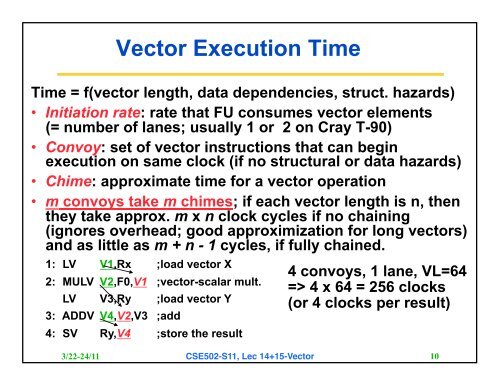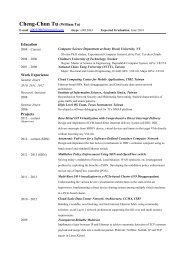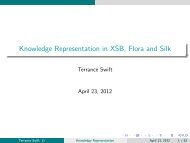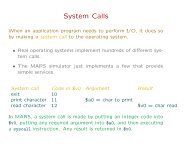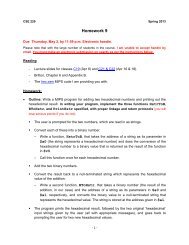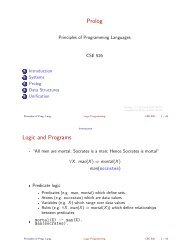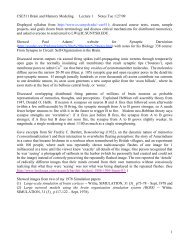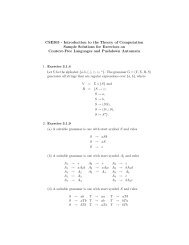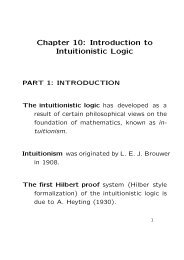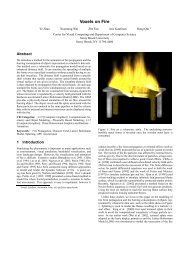vector - Department of Computer Science
vector - Department of Computer Science
vector - Department of Computer Science
You also want an ePaper? Increase the reach of your titles
YUMPU automatically turns print PDFs into web optimized ePapers that Google loves.
Vector Execution Time<br />
Time = f(<strong>vector</strong> length, data dependencies, struct. hazards)<br />
• Initiation rate: rate that FU consumes <strong>vector</strong> elements<br />
(= number <strong>of</strong> lanes; usually 1 or 2 on Cray T-90)<br />
• Convoy: set <strong>of</strong> <strong>vector</strong> instructions that can begin<br />
execution on same clock (if no structural or data hazards)<br />
• Chime: approximate time for a <strong>vector</strong> operation<br />
• m convoys take m chimes; if each <strong>vector</strong> length is n, then<br />
they take approx. m x n clock cycles if no chaining<br />
(ignores overhead; good approximization for long <strong>vector</strong>s)<br />
and as little as m + n - 1 cycles, if fully chained.<br />
1: LV V1,Rx ;load <strong>vector</strong> X<br />
2: MULV V2,F0,V1 ;<strong>vector</strong>-scalar mult.<br />
LV V3,Ry ;load <strong>vector</strong> Y<br />
3: ADDV V4,V2,V3 ;add<br />
4: SV Ry,V4 ;store the result<br />
4 convoys, 1 lane, VL=64<br />
=> 4 x 64 = 256 clocks<br />
(or 4 clocks per result)<br />
3/22-24/11 CSE502-S11, Lec 14+15-Vector 10


